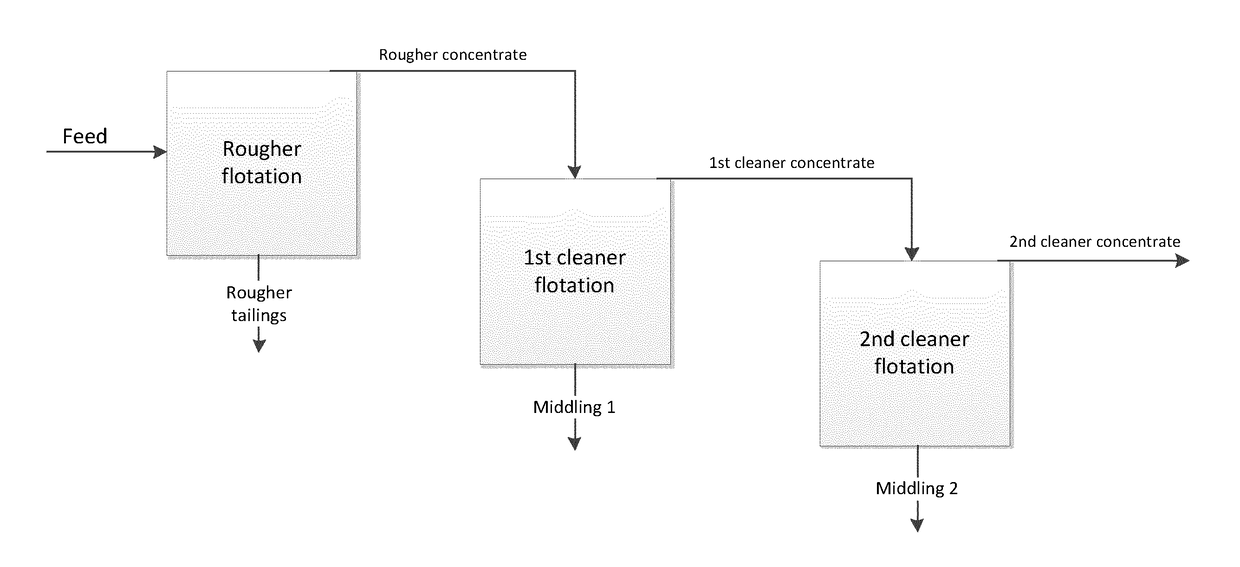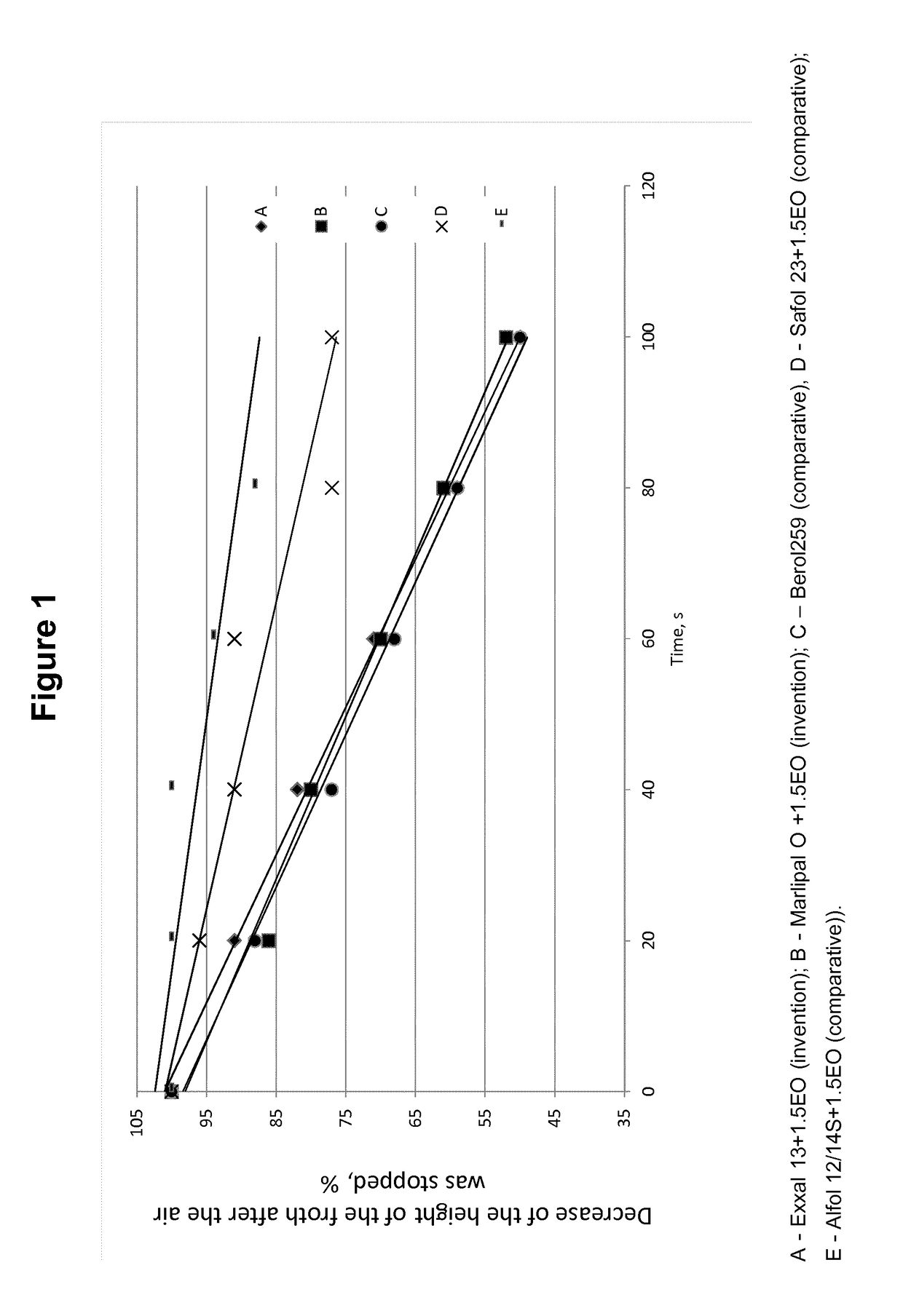Use of Branched Alcohols and Alkoxylates Thereof as Secondary Collectors
a technology of branched alcohols and alkoxylates, which is applied in the direction of flotation and solid separation, can solve the problems of entrainment of particles and froth products, reduced selectivity (grade, recovery), and technical inability to process flotation, and achieves a better environmental profil
- Summary
- Abstract
- Description
- Claims
- Application Information
AI Technical Summary
Benefits of technology
Problems solved by technology
Method used
Image
Examples
example 1
[0037]Froth Characterization
[0038]The froth column is a system of multiple-graduated transparent cylinders of 15 cm of inner diameter. The column is fitted with a variable speed impeller installed on the bottom of the column so that the pulp can be stirred as in a real flotation cell. A metered-air flow enters the column through a tube in the middle of the turbulent zone near the impeller. The slurry volume is set to 1.3 litres and the pulp density is similar to those used in regular flotation tests. The impeller speed and air flow are held constant during tests. The column is also equipped with a linear scale to measure the froth height. The typical test procedure is as follows: (1) conditioning of the collector composition and mineral slurry at pH 11 for 5 minutes; (2) aeration at a constant rate of 3.0 L / min; (3) the froth formation is followed for 10 minutes or until the maximum height is reached and stabilized; and (4) the froth formation and froth breakage is followed by takin...
example 2
[0049]General Flotation Procedure
[0050]The phosphate ore containing 8% of apatite, 65% phlogopite, 22% carbonate and 5% diabase was crushed and ground to a desirable flotation size (K80=255 μm).
[0051]500 g of the ore was placed into a 1.4 L Denver flotation cell. Tap water (Stenungsund municipal water with hardness 4° dH) was added to the marked level in the cell (1.4 L) and the mixing started. The pH of the flotation mixture was adjusted to 11 with a 5% aqueous NaOH solution and 300 g / t of a mixture of primary and secondary collectors as a 1% aqueous solution was added to the flotation cell. The conditioning was carried out at 1,100 rpm and room temperature for 5 min. After the conditioning step frother was added, and the flotation (900 rpm, 3L / min) started. The experiment was performed at RT (20±1° C.). The rougher flotation, followed by two cleaning steps was performed. All the fractions (tailings, middlings and concentrate) were collected and analyzed. FIG. 2 is a scheme illustr...
example 3
[0054]General Flotation Procedure
[0055]The phosphate ore containing 20-25% of apatite, 30-40% of silicates and c. 20% of iron oxides was crushed and ground to a desirable flotation size (K80=110 μm).
[0056]500 g of the ore were placed into a 1.4 L Denver flotation cell, 500 ml of tap water (Stenungsund municipal water with hardness 4° dH) were added and the mixing started. Then 5 minutes conditioning with 1,000 g / ton of a 1% (w / w) aqueous starch solution was performed, 500 g / ton of the collector (or a mixture of primary and secondary collectors) as a 1% (w / w) aqueous solution were added to the flotation cell and conditioning was continued for 2.5 minutes. After the conditioning steps tap water was added so that a total volume of 1.4 L was obtained, the pH of the flotation mixture was adjusted to 9.5 with a 10% NaOH aqueous solution and the flotation was started. The experiment was performed at RT (20±1° C.). The rougher flotation, followed by three cleaning steps, was performed. All ...
PUM
| Property | Measurement | Unit |
|---|---|---|
| Weight ratio | aaaaa | aaaaa |
Abstract
Description
Claims
Application Information
 Login to View More
Login to View More - R&D
- Intellectual Property
- Life Sciences
- Materials
- Tech Scout
- Unparalleled Data Quality
- Higher Quality Content
- 60% Fewer Hallucinations
Browse by: Latest US Patents, China's latest patents, Technical Efficacy Thesaurus, Application Domain, Technology Topic, Popular Technical Reports.
© 2025 PatSnap. All rights reserved.Legal|Privacy policy|Modern Slavery Act Transparency Statement|Sitemap|About US| Contact US: help@patsnap.com



